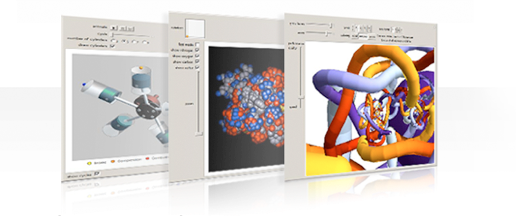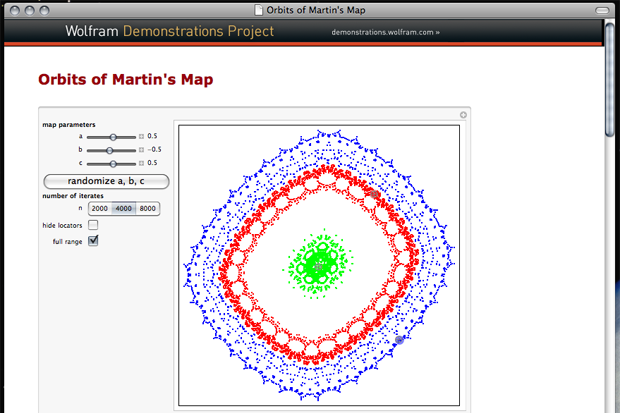Wolfram rolled out its Computable Document Format (CDF), which aims to turn documents into interactive applications and the goal is to turn lifeless documents into ones that bring data to life, show the data behind assumptions and illustrate concepts. Computable Document Format allows its user to program interactive experiences into a document so that data can be explored more easily and you can create widgets that allow the user to fiddle with sliders, input numbers or play animations on-demand……………
Wolfram Research announced the Computable Document Format (CDF), a new standard to put interactivity at the core of everyday documents and empower readers with live content they can drive. Traditional documents are easy to author, but are limited to content that’s static or can only be played back. Interactivity is familiar in apps, but usually requires programmers to create, rarely making it cost-effective for communicating ideas. As a result, today’s content lacks interactivity to engage with-dramatically limiting readers’ understanding. By contrast, CDFs are as interactive as apps, yet as everyday as documents. Central to the concept are knowledge apps, interactive diagrams, or info apps-the live successors of traditional diagrams and infographics. “Today it’s inconceivable that textbooks, financial reports, or news articles wouldn’t include visuals; they’re too valuable to communicating the idea,” said Conrad Wolfram, Director of Strategic Development at Wolfram Research. “Tomorrow, communicating ideas without interactivity will be just as inconceivable. CDF is here to make that change.” Wolfram added, “If a picture is worth a thousand words, an interactive knowledge app is worth a thousand pictures. CDF steps up the bandwidth of communication that much.”
CDF is a computation-powered knowledge container. Its interactivity isn’t just pre-generated, but live. And for the first time, authoring typically doesn’t need professional programmers, but is easy enough for teachers, journalists, analysts, managers, or researchers to themselves create the knowledge or info apps or interactive diagrams for reports and presentations, articles, and textbooks. “CDF documents liberate me from the confines of static depictions of models when creating interactive presentations of my hurricane insurance research for legislators and other public policymakers,” said Seth J. Chandler, Professor of Law, University of Houston Law Center. “When someone asks me a question, I can change the parameters on the fly, rerun the model, and present results. It makes for a much more engaged and constructive discussion.” “After using the Briggs/Cochran Calculus ebook that uses beta CDF technology, many faculty members have told us, ‘This is how calculus should be taught,'” said Bill Hoffmann, Executive Editor at Pearson. “Its interactive figures engage students and help them visualize key ideas-far beyond what can be done with chalk or white boards. A first edition, Briggs/Cochran’s Calculus has exceeded our expectations and won several industry awards.” More than 20 years of Wolfram R&D have made CDF possible-including a computation-capable player and the highly automated authoring so central to CDF. CDFs can currently be authored using Mathematica 8 and distributed for free using the Wolfram CDF Player. Additional options exist for restricted and/or monetized content distribution.
[ttjad keyword=”general”]





